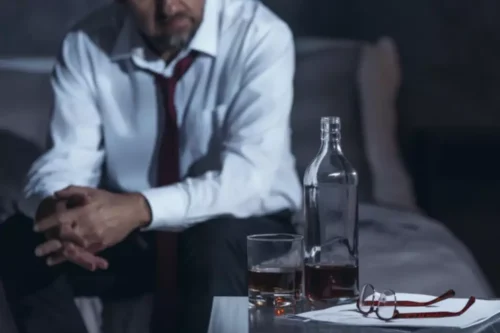
Even a minor bump can break the bloody dam and leave you black and blue the next morning. These could be signs of an underlying medical condition impairing clotting and platelet function. Bleeding disorders, liver disease, blood cancers, vitamin deficiencies, autoimmune disorders, and certain medications can all inhibit normal clotting. Liver cirrhosis is linked to bleeding complications and can even lead to the formation of a large type of bruise called a hematoma. Second, alcoholism can lead to a condition called thrombocytopenia, which is a low level of platelets in the blood. Platelets help the blood clot, so a low do you bruise easier when drunk level of them can cause easy bruising.
When to see your doctor
And yes, you may feel great and energized upon waking up—but that doesn’t mean you didn’t have too much to drink the night before. So, the next time you’re out with friends, remember to pace yourself and drink plenty of water. Sleep is crucial across the lifespan, but needs and habits waking up with bruises on legs after drinking evolve over time.
When to Stop Drinking to Prevent Bruising
Once a person develops an alcohol use disorder, they will continue to drink, even in the face of serious consequences, such as health problems caused by alcohol. Brain changes from repeated alcohol misuse lead to compulsive drinking and make it difficult to stop without treatment. Day drinking can increase the risk of other types of skin damage, such as sunburn, which can make the skin more prone to bruising. Understanding the causes of alcohol bruises allows you to make efforts to avoid or reduce their likelihood.

Check Your Symptoms
- It was very surprising for me to know that we damage our vessels every time you scratch your hand, kick the ball or keep your arm on the armrest for a long time!
- Seeking medical care for proper nutrition and managing any underlying liver conditions can help recover normal clotting ability.
- Bleeding disorders, liver disease, blood cancers, vitamin deficiencies, autoimmune disorders, and certain medications can all inhibit normal clotting.
- Chronic alcohol misuse has a negative effect on every system of the body.
One method is to alternate between alcoholic beverages and glasses of water. This will assist in avoiding dehydration and allow you to thoroughly enjoy your night without any unwanted repercussions. While not inevitable, alcohol-related bruising and injury can be better prevented with education, risk reduction strategies, and basic safety precautions. In these situations, it is generally recommended to avoid alcohol altogether given the compounding effects on bleeding risks. If you notice these patterns of abnormal bruising, see your doctor for evaluation even when sober.

Changes in your skin
- Most often, these bruises will be on the hands, legs, forearms, and feet.
- Your primary care provider will refer you to a hematologist if you have continued significant bruising larger than one centimeter with no known trauma.
- It’s important to consider this possibility, especially if the bruises can’t be explained or if the explanations change or don’t match the injury.
- The symptoms of this condition include thrombocytopenia, which lowers blood platelet counts and leads to bleeding and bruising.
- Easy bruising and bleeding are signs of cirrhosis, which is a serious liver disorder.
- Some people may also experience night sweats due to alcohol withdrawal syndrome or alcohol intolerance.
Bruises that take a long time to heal or getting bruised for no apparent cause could be signs of a bleeding disorder. Halfway house If your bruise doesn’t improve within two weeks, or if you start to notice frequent, unexplained bruises—whether you’re drunk or sober—call your doctor. And when the blood vessels underneath your skin break, it causes blood to leak out. All of these symptoms indicate that drinking has become a major problem in your life, and you should consider getting professional help to recover. It can be hard to think through an alcoholism problem on your own, but with the help of a therapist and addiction treatment professionals, you can gain control.
Blood spots
It increases the risk of various types of cancer, as well as high blood pressure, heart disease, and stroke. Another health-related risk linked to chronic alcohol misuse is liver disease, which is often the cause of bruising from alcohol. An alcohol use disorder is a legitimate medical condition that causes lasting changes in the brain.
- A person may start to bruise more easily than before for a number of different reasons, though bruising doesn’t necessarily indicate a serious health issue.
- Brain changes from repeated alcohol misuse lead to compulsive drinking and make it difficult to stop without treatment.
- So when you drink alcohol and injure yourself, you can be left with a bigger, more noticeable bruise than you might see while sober.
- Alcohol intake may cause dehydration, which can compromise your skin’s health and make it more sensitive to bruising and other possible injuries.
- A lot of it comes down to how parents talk to girls as opposed to boys, as well as how we’re allowed to play as kids.
- Examples of drinking in dangerous situations include driving while under the influence or drinking before operating some form of heavy machinery.

When you do your first examination, you notice a bandage on his leg, and something could be wrong with his head. By examining the head, you learn Kozliek has blood in his hair that isn’t his, but he does have a fever. As for his stomach, he only has a few bruises with no internal injuries. Finally, when looking over his right leg, you determine the wound wasn’t treated properly, and you’ll have to redo it.

We’ve learnt to always stay in this place of high stress, perpetually in fight-or-flight mode. That heightened level of cortisol makes concentrating on something difficult. With the constant multitasking, we’re barely paying attention to what’s happening at the moment. Women are much more likely to be career people as well as caregivers, making them easily distracted, stressed, and twice as likely to suffer from anxiety. The scattered reality of our lives means that we don’t have the mental capacity to avoid (or remember) bumping into table corners.

How to Avoid Getting Bruises From Alcohol
What all of this means is that people who live with an alcohol use disorder are likely to consume large quantities of alcohol. They may have such a high tolerance that they do not show any overt signs of intoxication, despite drinking large amounts. However, it can be helpful to keep an eye out for other symptoms to determine if there’s an underlying cause.
Yellowing of your skin and eyes
- With the constant multitasking, we’re barely paying attention to what’s happening at the moment.
- Alcohol acts as a natural blood thinner, temporarily impacting the normal clotting ability of blood platelets.
- That vasodilation also happens to be responsible for the flushed sensation of heat you sometimes get in your face when you drink.
- It can also relax the muscles leading towards your stomach, increasing the likelihood of leaking stomach acid.
Although anyone can experience a vitamin K deficiency, it is more common in infants, as breast milk does not contain much of this nutrient. Symptoms of scurvy include bleeding issues that may lead to bruising. Sometimes, however, bruising is a symptom of a more significant health issue.

